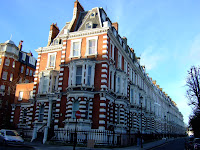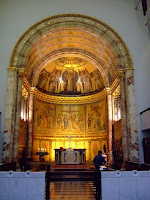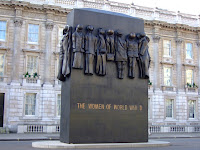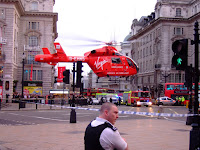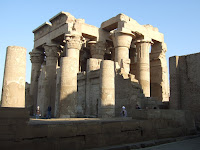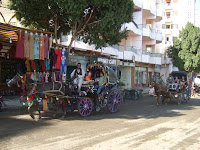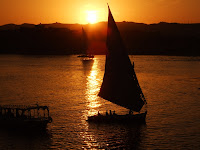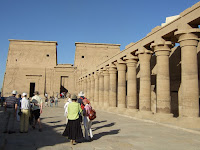
Once again our passage through Esna lock was delayed and we woke about an hour out of Luxor, the same place that we joined the Serenade after our tour of Luxor on Tuesday. The reason for berthing here was that it was by the bridge that gave access to the West Bank of the Nile. The original programme was that we would take a boat across the Nile from Luxor and return by bus, but the delay meant that the transport arrangements had to be reversed. Such is the life of a tour guide, coordinating and rearranging transport at short notice.

Our first stop was the Valley of the Kings which may have been a closely guarded secret at one time, but all the world and his wife were there this morning, including an ex-employee from NZ. We had just under an hour to see three tombs of our choice. There are now 63 discovered tombs but many were closed for restoration. Influenced by our Tour Guide we chose Rames III, IV & IX snaking through them in the queues and making it back to the meeting point with a minute to spare.

Then it was Hatshepsut's funerary temple, a grand edifice built into the cliff on the back of the hills surrounding the Valley of the Kings.
Off the standard tourist route and thus much less crowded is the Valley of the Queens where we were able to visit the tomb of the son of Ramses III who died young and was buried in the tomb prepared for his mother, and the tomb of Titi.

By far the best tomb in the valley is the tomb of Nefratari but unfortunately is has been declared off limits for tourist unless they pay $US3000 for the privilege of a vist. Leaving the valley we had time for a quick photo-shoot at the Colossi of Memnon, the oldest structures on the West Bank and a tourist attraction for more than 2000 years.

A ferry ride took us across the Nile to the Serenade, which had arrived in Luxor while we were on our morning excursion then, after lunch, we joined another tourist convoy to the Temple at Dendera.
The concept of the tourist convoy was a result of the November 1997 massacre at Hatsheput Temple when 62 people were
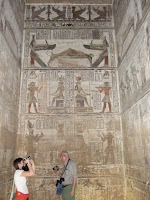
trapped in the Temple and shot, but it seems a rather strange idea since it gathers all the 'targets' into one easily identifiable place. The one positive benefit was that the convoy was given right-of-way everywhere and all local traffic was stopped in the side streets or stopped on the side of the road so that the convoy could speed past.
The Dendera Temple was the site of the first recorded use of the Signs of the Zodiac. What we saw was a replica as the original was stolen and now resides in the Louvre in Paris. It is also possible to visit the upper level of this temple, as it has not been destroyed in the passage of time.

For the benefit of the passengers who only joined the Serenade for the downstream voyage there was another floorshow with the Whirling Dervish (male) and belly-dance (female) performers infinitely more superior to the pair we watched on Monday night.

 Today the weather was cool, dry and sunny so it was time to leave the city and head for the country. The walk details promised views and wildlife but all we heard were the mating calls of the Boeings and Airbuses from nearby Luton.
Today the weather was cool, dry and sunny so it was time to leave the city and head for the country. The walk details promised views and wildlife but all we heard were the mating calls of the Boeings and Airbuses from nearby Luton. Nevertheless, wandering through the English countryside is always pleasant and the names so often raise questions as to their history and derivation, today’s cluster being no different: Tea Green, Lilley Bottom, Offley Hoo and Mangrove Green etc. (How many of the residents of Mangrove Green have ever seen a mangrove swamp?)
Nevertheless, wandering through the English countryside is always pleasant and the names so often raise questions as to their history and derivation, today’s cluster being no different: Tea Green, Lilley Bottom, Offley Hoo and Mangrove Green etc. (How many of the residents of Mangrove Green have ever seen a mangrove swamp?)













